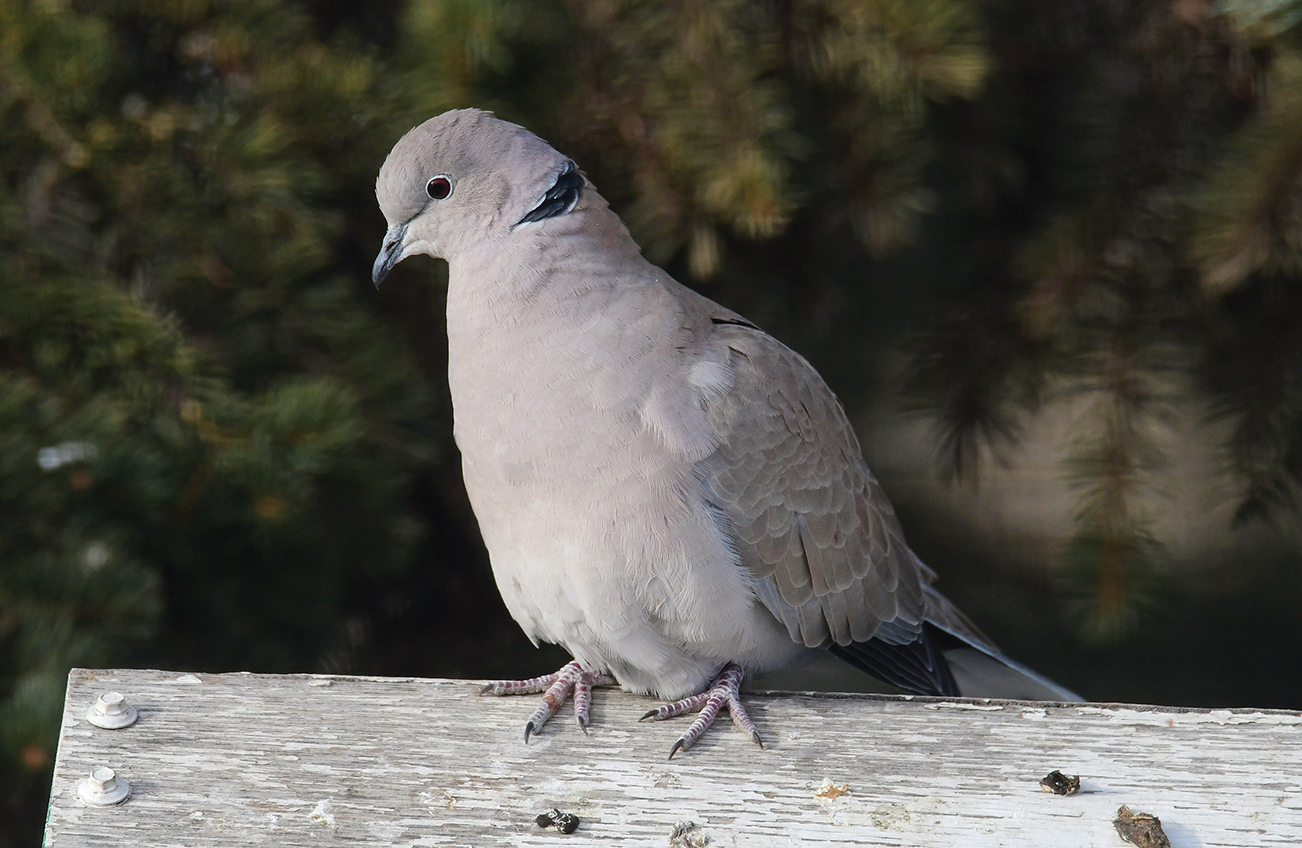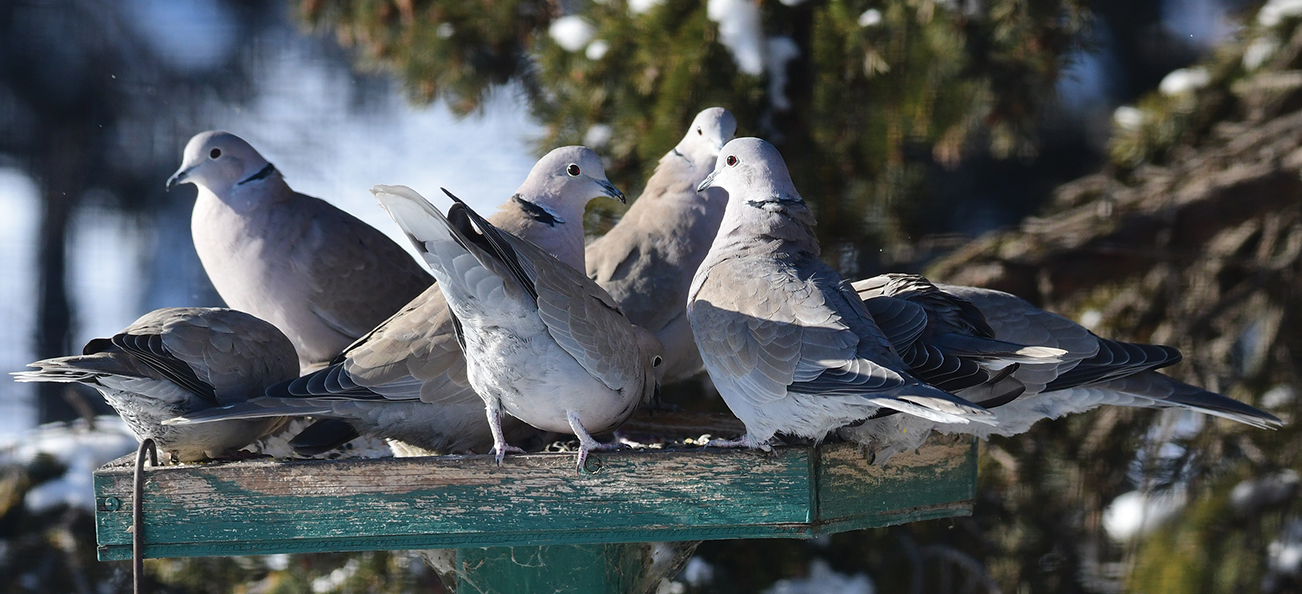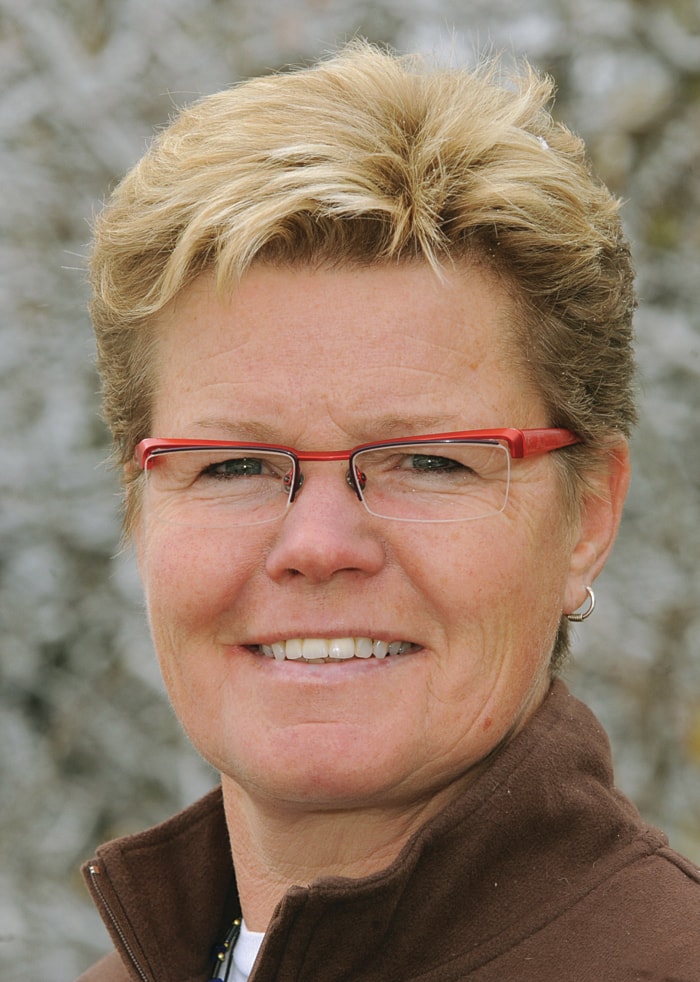Who knew that a lowly dove would hold the title for being the fastest spreading invasive bird species ever recorded in North America? Even the rapid dispersal of our continent’s two most famous and insidious invaders — house sparrows and European starlings — pales in comparison to the speed with which the Eurasian collared-dove has spread since it was first documented in Miami, Fla., in 1982.
It arrived on U.S. soil via the Bahamas, where some individuals escaped from a pet shop during a mid-1970s burglary. The shop owner then released the rest of his stock — about 50 birds.
Apparently, there was another release of individuals on the island of Guadeloupe in 1976, just before a forecasted volcanic eruption.
It took these doves only a decade to spread all the way from Florida to Alaska. Their dispersion has followed a northwesterly direction, with the most rapid expansion tracking along a southeast-to-northwest path between the two areas.
Judy Boyd, co-ordinator for the Central Alberta Christmas Bird Count (CBC), reports that Eurasian collared-doves were first documented in Central Alberta in 2005, with nine individuals counted.
CBC records confirm an increase: from the four individuals recorded in 2006 to 20 documented at feeders at the most recent count held on Dec. 18, 2016.
Eurasian collared-doves are so named because their nape is ringed by a black half-collar. They are quite large and can be easily distinguished from our only native dove — the summer-dwelling mourning dove — by their larger size, squarish tail, black collar and distinctive, rhythmic three-parted coo.
Eurasian collared-doves prefer highly modified landscapes over forested areas, so they are typically found around human habitation, not in more remote or natural habitats.
At a feeding station, they will dine on sunflower seeds (they gobble the seed, shell and all), wild bird mixes, millet, milo, wheat and cracked corn.
It appears that these birds are non-migratory, choosing to remain year-round in their newly settled regions.
Although they are obviously hardy, many of the birds that I have photographed exhibited severely frost-bitten toes (either stubs or festering sores on their feet), an obvious ravage of extremely cold temperatures to which they have not yet become acclimatized.
It remains to be seen what, if any, impact these new and very successful newcomers will have on the ecosystems they are invading.
Myrna Pearman is the biologist and site services manager at Ellis Bird Farm (ellisbirdfarm.ca). She can be reached at mpearman@ellisbirdfarm.ca


